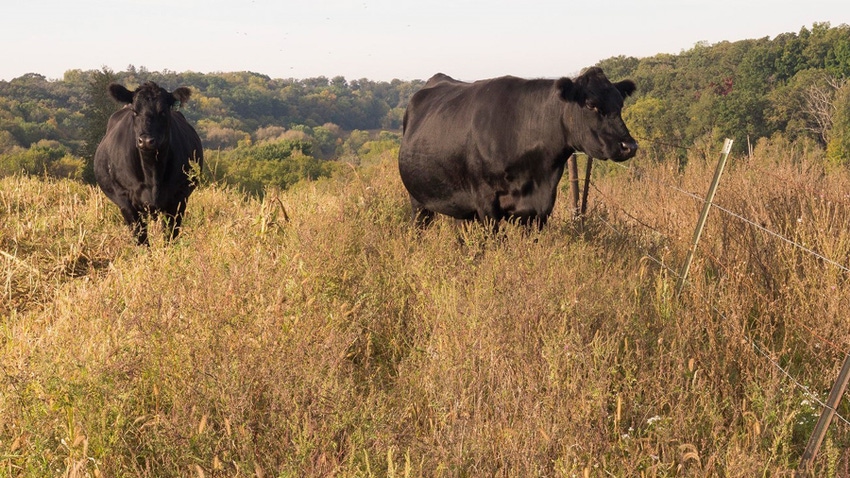December 5, 2023

by Adam Hartfiel
It is important to keep in mind the needs of growing, newly weaned replacements if you expect to have them physically ready for the upcoming breeding season. This includes environmental and nutritional needs. Your goal for raising replacement heifers should be to raise them as efficiently and economically as possible, yet set them up for longevity and long-term success.
Keep pens clean, provide sufficient dry bedding and offer protection from the wind. Cattle need a place to lie down and rest while keeping their hair coat clean and dry. This is important because it reduces the animals’ use of energy to stay warmth.
In addition, in pens and areas where cattle are housed, keeping manure and mud depth below ankle-deep reduces unnecessary energy spent just to move about. A good example is the amount of energy needed to walk around wearing our heavy winter boots compared to when we take them off in the spring.
Maintain nutritional needs
Meeting the nutritional needs of growing heifers is essential for them to be in proper body condition and to meet the targeted weight at breeding age of 13 to 15 months. Replacement heifers have been expected to be 60% to 65% of their mature body weight and reach puberty by breeding time.
Recent research has suggested that some heifers may be bred at 55% of their mature body weight without reproductive consequences. In these situations, greater amounts of gain need to be obtained before calving for the heifer to stay in adequate body condition to raise her first calf and breed back.
Feeding growing replacement heifers can be a more labor-intensive task if forages are in short supply or poor quality.
Some farms overwinter newly weaned calves, bred heifers, first-calf heifers and older cows together in one group. In this scenario, the younger and smaller animals are at the bottom of the social order. If feed is in short supply, this situation will be even more detrimental for growing heifers. Splitting the herd into groups of similar age, size and stage of development will allow more efficient and economical allocation of feed and make sure each group’s nutritional needs are being met.
Overall, winter can be a challenging time for cow-calf producers. Weather, forage quality and mature cow competition are just a few obstacles producers may run into while developing their next set of cows for the farm. However, maintaining good body condition, feeding quality forages and paying keen attention to animal husbandry can help make this process successful time after time. Take care of your herd, both young and old, and they will take care of you.
Hartfiel is a regional University of Wisconsin Extension livestock educator for Adams, Green Lake and Waushara counties.
Read more about:
Cow calfYou May Also Like




